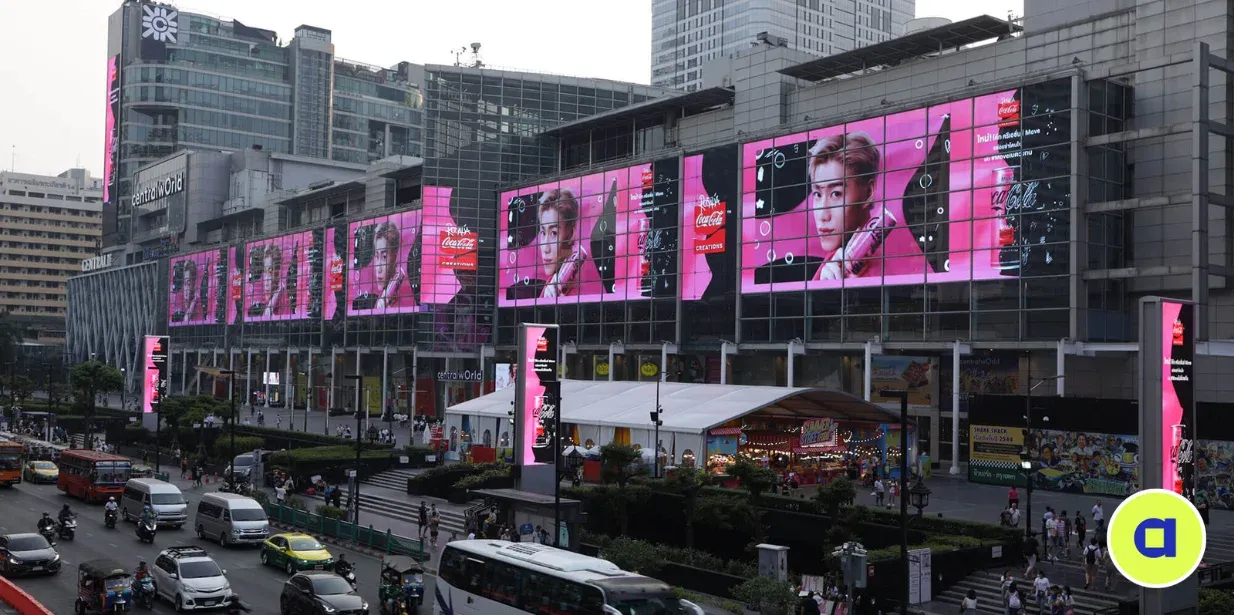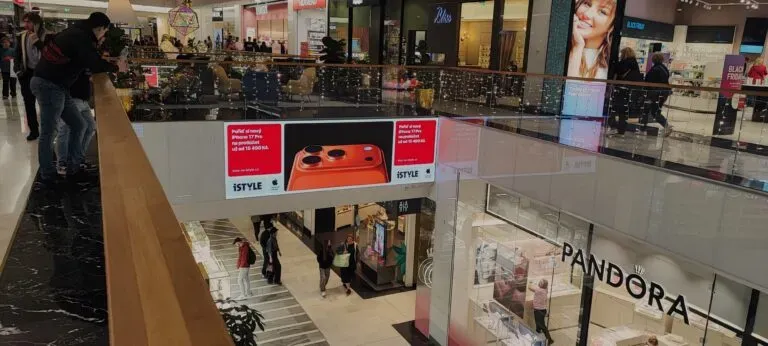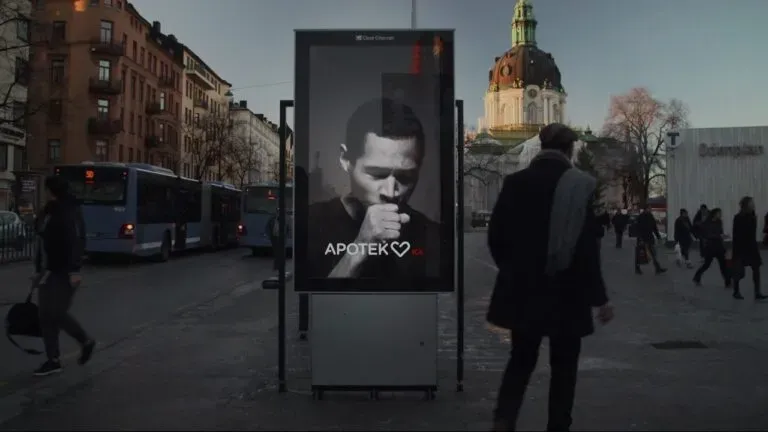Is it worth investing in non-standard DOOH in 2025? Advertising on transport and facades
DOOH: Traditional billboards are no longer the only tool to influence the urban audience.
Companies are increasingly turning to placing ads in the subway, on the facades of buildings, and even in the elevators of business centers. This approach not only allows increasing reach but also building more personalized communication with city residents. A key role in this process belongs to digitalization—modern screens and content management through video wall software are changing the approach to outdoor advertising.
Current trends in the outdoor advertising market
The development of digital technologies stimulates the evolution of outdoor advertising. Not long ago, the main focus was on static boards, but now DOOH (Digital Out Of Home) is gaining more and more popularity. Modern advertisers choose universal solutions that, thanks to a flexible content management system and the use of players for digital signage, make it possible to quickly adapt campaigns to the current needs of the audience.
Thanks to the emergence of pDOOH, it has become possible to automatically analyze the results of displays and adjust campaigns literally in real time based on user behavior or changes in city flows.
Reach and role of non-standard formats
Among non-standard solutions, transport channels stand out especially. Ads placed in subway cars, on buses, or on taxis are perceived daily by thousands of city residents. Dynamic video clips programmed through modern control systems can be especially effective. For centralized display control, software packages for video walls are used, providing accuracy in launching content at the right time and in designated locations.
Media facades in the city center are well suited for large-scale image campaigns. The program for managing such surfaces allows brands to control the content, frequency, and duration of creative output, which reinforces the impact on the target audience.
Digital innovations and planning approaches
Today, automation is a key trend in outdoor advertising. Programmatic DOOH creates conditions for efficient purchasing of advertising spaces: specialists can set targeting by weather, time of day, or traffic. All this is implemented with the support of digital media management platforms, where each sign or video wall is integrated into a unified control system.
At the same time, indoor advertising in business centers, residential complexes, or shopping malls has sharply increased in popularity due to the possibility of targeted reach. Compact displays, for which specialized players are used, ensure the demonstration of relevant offers to those who really notice them.
This approach allows you to use budgets as efficiently as possible, choosing the optimal carriers for a particular task: whether it’s launching a mass campaign via a media facade or a targeted activity on indoor screens.
Market dynamics of outdoor advertising: international analytics
The global outdoor advertising market shows noticeable growth due to rapid digitalization, changing consumer habits, and the introduction of new technological solutions. The transformation of the market is particularly evident in the sphere of digital signage, video advertising, and LED billboards, which are gradually replacing traditional formats in many countries around the world.
Global trends and statistics
According to analysts at Talon OOH, in 2025 the total volume of the global outdoor advertising market will exceed $41.8 billion, and the Digital Out Of Home (DOOH) segment, which includes modern digital signage and LED solutions, will reach $22 billion, with an average annual growth of over 8%. Research by Global Growth Insights indicates that over the next eight years, the share of DOOH will double, and by 2033 this segment will exceed $65 billion.
LED billboards are one of the most dynamic subsegments: in 2025, the global market for LED displays for advertising is estimated at $5.5–8 billion, with annual growth of over 7%. Their popularity is explained by their brightness and flexibility in content settings, energy efficiency, and ease of integration with mobile and digital platforms.
Video advertising and interactive solutions
In many developed countries, video advertising through digital screens has reached a new level thanks to automated management systems and personalized targeting. Technologies such as AR and integration with mobile applications provide brands with a significantly broader toolkit for interacting with audiences. In the USA, according to BrandXR, total outdoor advertising revenue has exceeded $10 billion, and the share of video advertising continues to grow every year.
Growth factors
According to Archive Marketresearch, the main drivers of growth remain urbanization and the increase in urban traffic, which raises the number of contacts with digital signage. Modern technological development (AI, data analytics, innovative management systems) makes it possible to launch more targeted and dynamic campaigns in real time. LED billboards play a significant role in “smart cities,” where such screens are used not only for advertising but also for social or municipal information.
Effectiveness of non-standard formats in practice
Modern outdoor advertising formats are no longer just classic billboards but a whole network of complex solutions: from media facades on central streets to intelligent screens for advertising in city infrastructure. Large LED screens draw the attention of pedestrians and drivers precisely because of their brightness, size, and the high clarity of dynamic content. Such structures work excellently for brand campaigns, where it is important not only to achieve reach, but also to engage the viewer, remaining in their memory for a long time.
To manage such a network, specialized software for DOOH is used, which allows synchronized broadcasting of clips, planning event schedules, and selecting optimal times for display. Thanks to technology, a modern digital signage player is able to change messages almost instantly in response to market situations—this significantly enhances the effectiveness of advertising communication.
When a non-standard format is the optimal solution
Bright media facades and large LED screens are indispensable in cases where maximum engagement and a wow effect are needed. They are especially in demand in areas such as advertising expensive brands, new technologies, real estate, or large-scale events. Add to this the flexibility provided by smart software platforms for managing media networks: advertisers can quickly make changes, plan special promotions, and respond to weather changes or traffic flow in real time.
No less important are compact screens for advertising within neighborhoods or large residential complexes. For them, software for LED screens is used, which makes it possible to display targeted or local messages to a narrow audience. Such carriers are ideal for promoting local businesses, delivery services, everyday utilities—that is, where scale is less important than reaching the right segment.
How non-standard formats work with different budgets
When the campaign budget is limited and the main goal is to quickly reach a wide audience, a classic billboard or standard sign remains relevant. However, if the company faces the task of standing out in the informational flow, emphasizing uniqueness, or addressing a specific district or community, solutions based on a DOOH network or dynamic digital screens make it possible to achieve the desired result.
For small local brands, this could be inexpensive advertising in elevators—a simple but extremely precise format. Here, effectiveness is achieved through the use of compact digital signage players and easy adjustment of displays via a single control center. For a large national campaign, a massive launch on media facades or advertising screens in major cities is appropriate, where all the benefits of modern analytics, DOOH software, and automated schedule planning are connected.
Practice of using modern solutions
One of the main trends is creating a unified DOOH network combined through software for LED screens and universal management platforms. This allows centralized control of all advertising surfaces, quick adjustments to creatives, and instant response to changing situations or market demand. Analytics from such networks make it possible to clearly measure the effectiveness of each impression—which is especially valued by brands with defined KPIs.
The role of SSP and DSP in the modern DOOH ecosystem
The integration of modern SSP (Supply-Side Platform) and DSP (Demand-Side Platform) has become key for optimizing management and monetization of DOOH Display Solutions inventory. Thanks to SSP, owners of advertising spaces can centrally manage the availability of their screens for various types of DOOH advertising by setting priorities, display schedules, and pricing policies. This makes it possible to maximize site occupancy and receive income in real time. The functionality of SSP is based on flexible centralized video management systems, which reduces the need for manual administration.
DSP, in turn, allows advertisers to precisely adjust campaigns for each type of DOOH display and select the optimal audiences, locations, and time slots for placement. By using DSP platforms, brands have access to an extensive network of DOOH Display Solutions, can conduct A/B testing of creatives, and quickly change messages based on traffic, demographics, or even weather. DSPs are deeply integrated with the modern centralized video management system, providing full transparency of purchases and tracking the results of every advertising activation.
Thus, it is exactly the symbiosis of SSP and DSP that drives the scaling of DOOH advertising, increases efficiency in the use of advertising screens, and truly reveals the potential of each centralized video content management system in urban networks. Thanks to this, advertisers get the ideal balance between reach, flexibility, and personalization of communication.
DOOH advertising in the city: a summary
Today, DOOH advertising has become the standard for effective urban communication. It allows brands to quickly adapt their messages to changes in the city and to reach the desired audience via modern digital displays.
The main advantage of such solutions is the simplicity of management, quick updates, and the ability to clearly evaluate campaign results. That is why digital outdoor advertising helps companies remain visible and relevant where it truly matters.
Advision — Content Management System for remote management, media planning of video and audio content broadcasting and Supply-Side Platform for monetization of advertising time. We help Digital Signage owners and DOOH advertising operators earn on advertising placement, automate workflows and build a reliable media infrastructure using our own software solutions.
Contact us if you want to increase your profit and implement the most modern technologies to solve problems!
Share the news




















